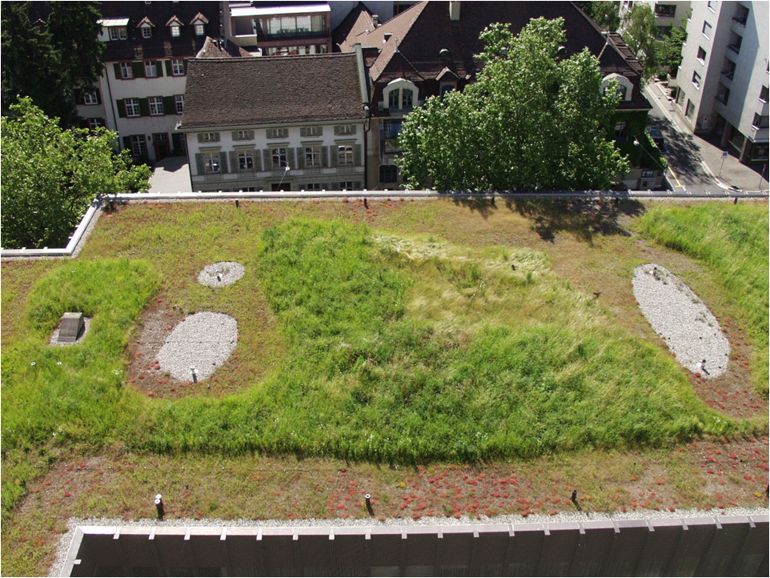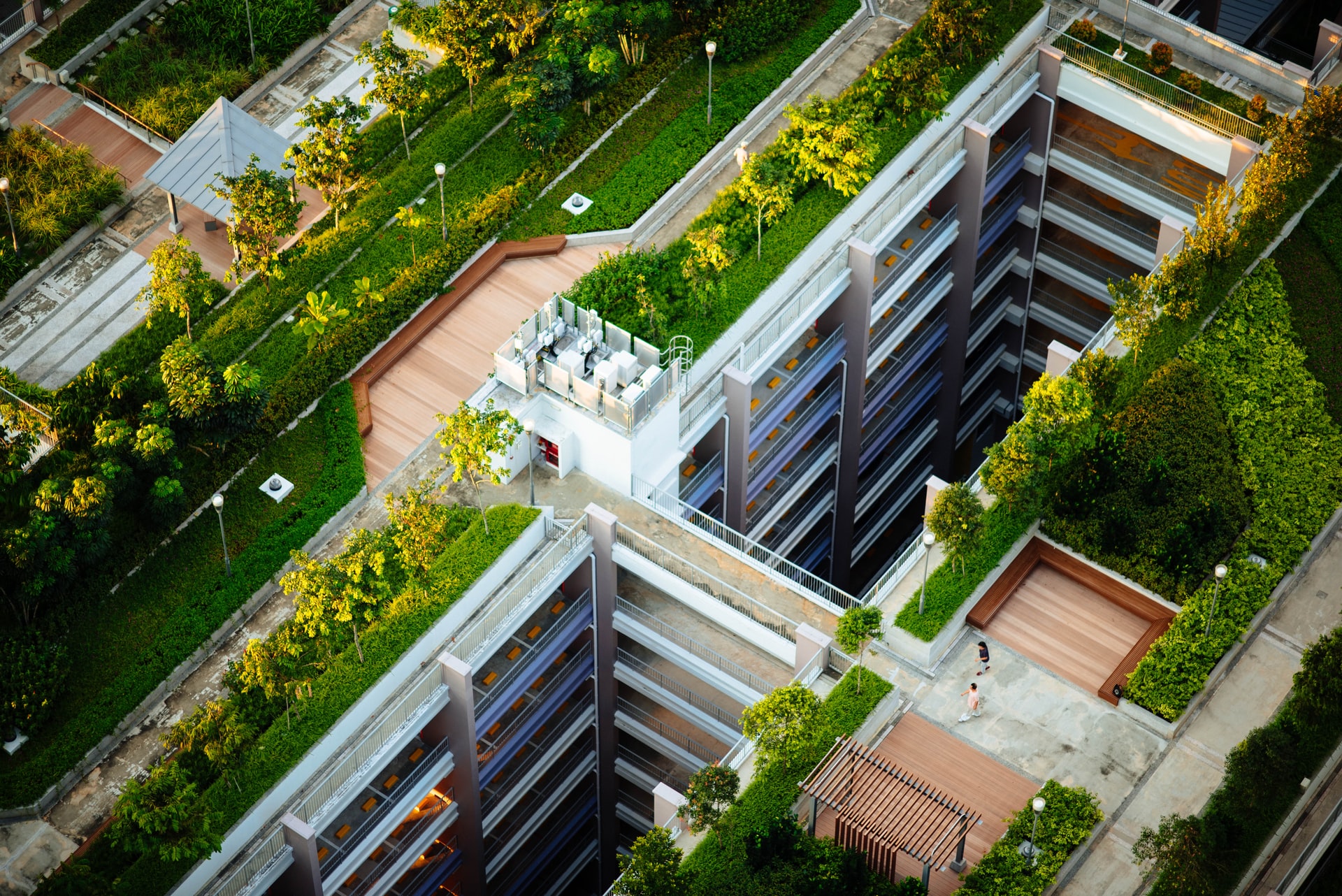HOW ONE SWISS CITY MADE GREEN ROOFS A LEGAL REQUIREMENT IN BID TO TACKLE CLIMATE CHANGE
THE GREEN ROOFS OF BASEL
Back In 2002, Basel, Switzerland became the first city in the world to make green spaces a legal requirement on new buildings. Almost 20 years on, and they have more than 1 million square metres of lush green roofs to show for it. The green roof strategy in Basel is expected to bring adaptation benefits in the form of lower temperatures and reduced surface runoff.
HOW BASEL USES GREEN ROOFS TO COMBAT CLIMATE CHANGE
With mounting evidence to suggest that greener cities are healthier cities, it’s crucia for city planners to make space for biodiversity. With this in mind, Basel, a major city in west Switzerland, came up with an ingenious way of adding some much-needed greenery to urban areas. Utilising their once empty flat-roof space, Basel’s city planning authority made green roofs compulsory.
This requirement adds patches of green space which defuse humidity and help to cool buildings off quicker during the summer months.
As part of Basel’s biodiversity strategy, for the past 19 years, green spaces have been mandatory on all new and retrofitted buildings with flat roofs.*
*In 2002, an amendment to the City of Basel’s Building and Construction Law was passed. It reads that all new and renovated flat roofs must be greened and also stipulates associated design guidelines. This requirement was reinforced in 2010 through a regulation that mandated green roofing for all flat roofs if part of a building retrofit, and in all new buildings with flat roofs.
Since being made compulsory, more than 1 million square metres of green roofs have been constructed, making it the leading city in ‘greening’ its urban spaces.
ENSHRINING GREEN SPACE INTO CONSTRUCTION LAW MADE AN EVERLASTING CHANGE TO BASEL’S ARCHITECTURE
Researcher at the Institute for the Environment and Natural Resources in Zurich Dr Stephan Brenneisen has been advising Swiss developers and contractors for years to achieve green innovation.
Setting out to fix issues of energy wastage and increasing temperatures due to climate change, Brenneisen wanted to utilise forgotten spaces in the city to create sustainable solutions.
"Here in Basel, we noticed that (flat roofs) were not being used enough and (could be) valuable areas for nature,” he told EuroNews.
“That's why we started, together with our colleagues from the building department, and in particular, the then Director Barbara Schneider, to integrate these areas into the planning law, to define guidelines and thus to implement these projects in Basel."
By enshrining green space into construction law, Brenneisen and his team ensured that this would be an everlasting change to Basel’s architecture.

HOW DO BASEL MAKE THEIR GREEN ROOFS?
For developers, installing green roofs is now considered routine, and developers make no objections to installing them. In Basel, the green roof regulations (i.e. the 2002 amendment to the City of Basel’s Building and Construction Law), stipulate the following:
The growing medium should be native regional soils — the regulation recommends consulting a horticulturalist;
The growing medium should be at least 10 cm deep;
Mounds 30 cm high and 3 m wide should be provided as habitat for invertebrates;
Vegetation should be a mix of native plant species, characteristic to Basel;
Green roofs on flat roofs over 1,000 m2 must involve consultation with the city’s green roof expert during design and construction.
A further amendment in 2015 set the minimum thickness of soil to 12 cm.
HOW GREEN ROOFS HELP TACKLE THE HEAT ISLAND PHENOMENA
Heat islands are cities that are often several degrees warmer than the suburbs because the urban areas generate and trap heat. This, in turn, increases the number of local storms. However, research has shown that trees and other plants help cool the environment, making vegetation a simple and effective way to reduce urban heat islands. What’s more, vegetation absorbs and retains rainwater runoff before it can become a flooding hazard. Learn more.
HOW TREES REALLY DO HELP KEEP A CITY COOL
We have all experienced and appreciated how the shade of a single tree can provide welcome relief from the hot summer sun. But when that single tree is part of a small forest, it can create a profound cooling effect. Learn more.
HOW FAST-GROWING TINY-FORESTS CAN HAVE AN ENORMOUS POSITIVE IMPACT ON CLIMATE
Tiny, dense forests are appearing around Europe as part of a movement aimed at restoring biodiversity and fighting the climate situation. Often located in schoolyards or alongside roads, the forests can be as small as a tennis court. They are based on the work of Japanese botanist Akira Miyawaki, who has planted more than 1,000 of these mini-forests in Japan, Malaysia and elsewhere. Learn more.
Original article from BrightVibes.
